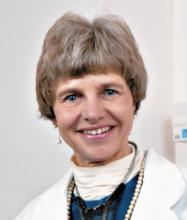America’s public education system is in crisis. Despite investing hundreds of billions of dollars each year in our schools, third grade reading scores and high school dropout rates have not improved.
A growing group of pediatricians believe they may have the answer – and it all begins at the 6-month well-child visit.
They are the front lines of Reach Out and Read, a national organization that prepares America’s youngest children to succeed in school by partnering with doctors to prescribe books and encourage families to read together.
Children in the Reach Out and Read program receive a brand-new, age-appropriate book at every regular check-up from 6 months old until they’re ready to enter kindergarten. Pediatricians also speak with parents at every visit about the importance of reading aloud and give them developmental guidance and tips for how to incorporate reading into their daily routine.
Reach Out and Read works. Fourteen peer-reviewed, published studies demonstrate the efficacy of the program. Parents served by Reach Out and Read are four times more likely to read to their young children (Am. J. Dis. Child. 1991;145:881-4), and their children enter kindergarten with larger vocabularies, stronger language skills, and a 6-month developmental edge (Pediatrics 2001;107:130-4).
Both the American Academy of Pediatrics (AAP) and the National Association of Pediatric Nurse Practitioners (NAPNAP) have officially endorsed the Reach Out and Read model of early literacy promotion, which is included in the official Bright Futures guidelines.
Today, 27,000 pediatricians, family physicians, and nurse practitioners are participating in Reach Out and Read. If our ultimate goal is to ensure that all children are prepared to achieve their enormous potential, then Reach Out and Read must become the standard of care for every pediatric provider nationwide. That’s because pediatricians have unrivaled access to children aged 5 years and under (96% of children in this age group see their doctor at least once annually).
The lack of exposure to books and reading has created a widespread school readiness gap. More than one-third (or 34%) of American children enter kindergarten without the basic language skills they will need to learn to read (Carnegie Foundation for the Advancement of Teaching, 1991).
Millions of those children will never catch up. In fact, 88% of first graders who are below grade level in reading will continue to read below grade level in fourth grade. (J. Educ. Psychol. 1988;80:437-47). And, according to the national 2010 Annie E. Casey KIDS COUNT Report and the National Assessment of Educational Progress (NAEP), 68% of American fourth graders, including a majority from every state, cannot read proficiently.
As the years go on, children with reading difficulties are at a higher risk for school failure, dropping out, juvenile delinquency, substance abuse, and teenage pregnancy.
Since its founding at Boston City Hospital (now Boston Medical Center) in 1989, Reach Out and Read has expanded to more than 4,600 hospitals, health centers, and clinics nationwide. Together, those programs serve 3.9 million children, including 33% of American children growing up in poverty.
I became a Reach Out and Read provider in 1998 and have since seen firsthand the joy that books bring to children. With Reach Out and Read, the book becomes an integral part of the developmental assessment at every well-child visit from 6 months to 5 years of age. Our residents also have embraced the concept of using a book both to assess development and to promote literacy to the families they serve.
At our clinical site in New Hampshire, we serve a large refugee population. I can remember one little boy from an African country who was reduced to tears when he inadvertently lost his book on his way to get an x-ray, and the smile on his face when we happily replaced the book for him.
As a result of the books, children learn to love school – and learning. They become lifelong readers. They’re better prepared to achieve their potential.
And it all starts with the turn of a page.
Reach Out and Read's website offers information for medical providers. Active Reach Out and Read providers also are eligible to participate in the program’s new Quality Improvement Project, which has been approved by the American Board of Pediatrics for 25 Category IV Maintenance of Certification points.
Dr. Boulter is an adjunct professor of pediatrics at Dartmouth Medical School, Hanover, N. H., and medical director for Reach Out and Read in that state.

